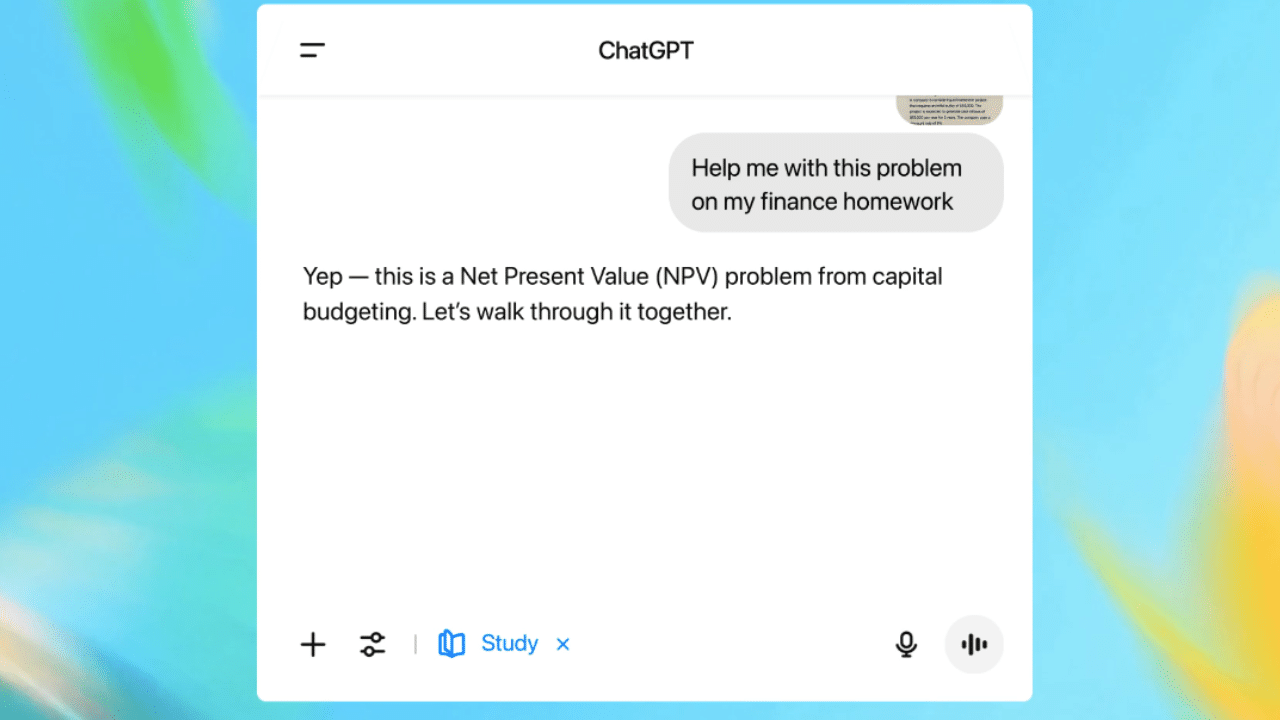OpenAI has announced a new feature of ChatGPT called Study Mode to transform the process of learning in India. The launch of the tool was on July 29, 2025, and the tool is free and multilingual, guiding people through a staged learning process. Rather than giving immediate solutions, it prompts critical thinking using interactivity. The feature accommodates 11 Indian languages; thus, it is available to different learners. It is offered to all log-in users on Free, Plus, Pro, and Team plans, and so is ChatGPT Edu access soon.
It is a new helpful tool that helps students with their homework, preparation for exams, and study of new issues. OpenAI has teamed up with educators and other professionals in the education sector to develop a system that enhances a more profound understanding. Study Mode enables users to learn dynamically by entering voice, text, and image information. Indian students have already shown their early reactions, which suggest that it has the potential to make learning interesting and efficient.
As ChatGPT becomes a go-to tool for students, we’re committed to ensuring it fosters deeper understanding and learning.
Introducing study mode in ChatGPT — a learning experience that helps you work through problems step-by-step instead of just getting an answer. pic.twitter.com/B8VbRYJH6r
— OpenAI (@OpenAI) July 29, 2025
How to use Study Mode
To enter Study Mode, the user clicks on ChatGPT and then chooses the tools menu, where Study and Learn is a subcategory of the tools. Once a topic is selected or a question is posed, the tool gives a set of questions or prompts to guide one through. In the above case, when the student poses a question about algebra, ChatGPT may pose the following question: ‘What is the initial step to resolving this equation?’ This Socratic method is participatory. When using Study Mode, flexibility is provided to turn it on and off during a session.
Main features of Study Mode
Study Mode provides systematic training provided by interactive prompts, quizzes, and personalised feedback. It simplifies complex subjects in order to make it easier to break them down. The instrument takes on the level of the user; therefore, it is personalised. Quizzes such as knowledge checks aid in concept reinforcement. OpenAI will implement visual support and track progress on the feature depending on the user feedback.
Impact on Indian education
The introduction of the Study Mode meets the fears of AI abuse in education. It encourages ethical learning by helping the students approach answers instead of giving them answers. Teachers regard it as a move towards making AI a useful classroom technology. It supports multilinguality and thus serves the multilingual India. In an attempt to perfect the tool, OpenAI is collaborating with researchers at Stanford to research its effect on learning outcomes.
OpenAI considers Study Mode to be the beginning of a revolution in the field of AI-based education. Additional features that might be added in the future are voice-driven quizzes and more personalisation. The company has invited Indian students, parents, and teachers to leave feedback so that it can improve the feature. Study Mode may become a new paradigm of interactive learning in India and in other countries as AI tools become popular in the sphere of education.
